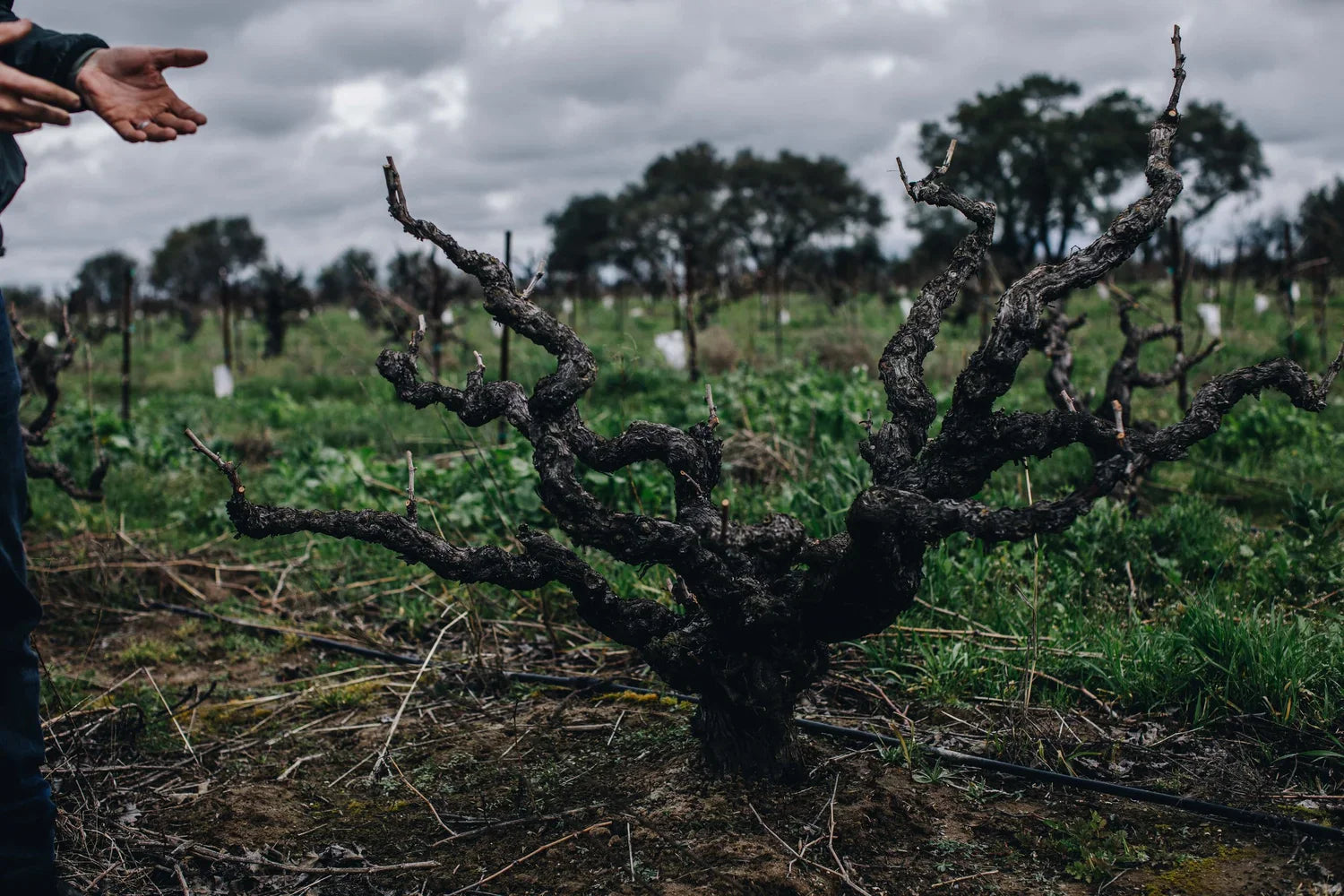California Mediterranean Varietals
The origins of California wine are rooted in Spanish history. Spanish grapes first arrived in what was then Alta California with the Franciscan padres, including Father Junipero Serra, in the late 1700s. They planted Listán Prieto (aka the Mission grape) throughout Southern and Central California. As Catholics, the Spanish valued grapes and red wine as essential symbols in both their rituals and culture. The padres became known for cultivating drought-tolerant, hedge-pruned vines, and their viticultural techniques and tools were passed down to California’s early grape growers. While the Mission grape fared poorly in the cooler areas around Mission San José and Mission Santa Cruz, it thrived in the warmer regions of the Central Valley and Sonoma.
By the mid-19th century, nurseries were propagating vines from across Europe. Italian and Spanish varieties flourished in the state’s warm, Mediterranean climate. The Gold Rush brought waves of immigrants eager to slake their thirst with the oceans of wine produced in Santa Clara, Napa, the Central Valley, and Sonoma. Between 1850 and 1890, wine production ramped up across the state as settlers and viticultural pioneers began importing cuttings. Italian immigrants, one of the largest groups to arrive during this period, brought agricultural expertise and found the climate similar to that of their homeland. As a result, wineries sprang up throughout the state in the late 19th century.
Prohibition, enforced by the Volstead Act beginning in January 1920, forced nearly all of California’s wineries to shut down. Although the 18th Amendment was ratified in 1919, the nationwide ban on alcohol sales took effect the following year. Yet vineyard acreage grew in some regions, as grape concentrate was shipped nationwide and sacramental wine continued to be produced for the Catholic Church. These measures kept the industry alive, though vastly diminished. By the time Prohibition ended in 1933, the number of wineries in California had plummeted from about 700 to just 40.
Following the repeal of Prohibition, the wine industry emphasized quantity. Once again, a sea of cheap, sweet wine flowed from the Central Valley. By 1952, Mission was still the fourth most planted red grape, and Palomino led among white varieties. Wines of many types were generically labeled “Burgundy,” “Chablis,” and the like, and although most California “Chablis” was made of Chardonnay, the “Burgundies” were made from blends of Zinfandel, Tempranillo, Syrah, Petite Verdot, Grenache, and Cabernet Sauvignon; little to no Pinot Noir was included.
Although the 1970s and 1980s saw a rise in Mediterranean plantings used for quality winemaking, it wasn’t until the 1990s and early 2000s that winemakers and enthusiasts began to rediscover the hidden gems scattered throughout the state. While Spanish varieties are steadily gaining attention, they still make up only a small portion of California’s vineyards compared to classic grapes like Cabernet Sauvignon and Chardonnay—so we’re especially excited to share this month’s selections with you.
Cheers!
Justin Malesheetz
Fillmore Wine Buyer
|
2023 Orixe Sotelo “Soto” Godello |
|
|
Region / Country of Origin: Sonoma, CA USA |
About the winery: Orixe Sotelo is the passion project of husband and wife team Gustavo and Jackie Sotelo. Originally from Mexico City, Gustavo has spent over 15 years working in such wineries as Etude, Mumm, Bodegas Mauro (the personal project of Mariano Garcia, who had been winemaker at the legendary Vega Sicilia for 30 years), and finally Scribe, where he is the current Director of Winemaking. Jackie, a UC Berkeley graduate with a certificate from the Wine and Spirits Education Trust, has spent an equal amount of time working on the marketing and sales side of wine with such wineries as Ashes & Diamonds and Bedrock Wine Co. Their focus is on Spanish varietals as they believe these grapes are best suited for the climate of California. About the winemaking: 100% Godello, the first planted in the state, from Birdland Vineyard at the base of Sonoma Mountain in the town of Glen Ellen. After a light crushing and sitting on the skins for three hours, the grapes were pressed and transferred to 500-liter puncheon where it underwent primary fermentation but not malolactic fermentation. The wine was then aged 10 months on its lees. Tasting Notes: Pale gold in the glass with a nose of fresh grapefruit, lime, menthol, and dried herbs. Vibrant acidity on the palate with a waxy roundness and flavors of ripe green citrus with a long dry mineral finish. |
|
Winemaker: Gustavo Sotelo |
|
|
Price: $25.99 btl/$280.69 cs |
|
|
Suggested Food Pairing: Smoked salmon, sushi, grilled seafood |
|
|
2022 Perlegos Winery Duetto Red Blend |
|
|
Region / Country of Origin: Clement Hills, Lodi, CA USA |
About the Winery: John and Jeff Perlegos' family has been farming in Lodi since the 1950s. 1st generation Americans born of Greek immigrants, they grew up on a vineyard and helped their parents with irrigation work and at their general store during summer. While they only started making wine in 2020, the grapes from their vineyard have been used by such wineries as Bedrock Wine Co, Sabelli Frisch, and Maître de Chai. About the winemaking: 50% Nero d’Avola from Fernow Ranch, an organic, no till vineyard in the northern end of Lodi near the town of Acampo, and 50% Zinfandel from the Perlegos own Stampede Vineyard in the Clement Hills AVA of Lodi that was planted in the 1920s. Grapes the vineyards were destemmed and fermented separately with ambient yeasts. The wines are then aged for 16 months in neutral French oak before being blended at bottling. Tasting Notes: Deep garnet in color with a nose of dark cherry, potpourri, and fresh red and black bramble fruit. On the lighter side of medium bodied with refreshing acidity and fine grained tannins with flavors of dark cocoa, raspberries, and tart black fruit with a dry, long earthy finish. |
|
Winemaker: John and Jeff Perlegos |
|
|
Price: $24.99 btl/$269.89 cs |
|
|
Suggested Food Pairing: Lamb, barbacoa, grilled pork chops, carne asada, barbecue chicken
|
|





